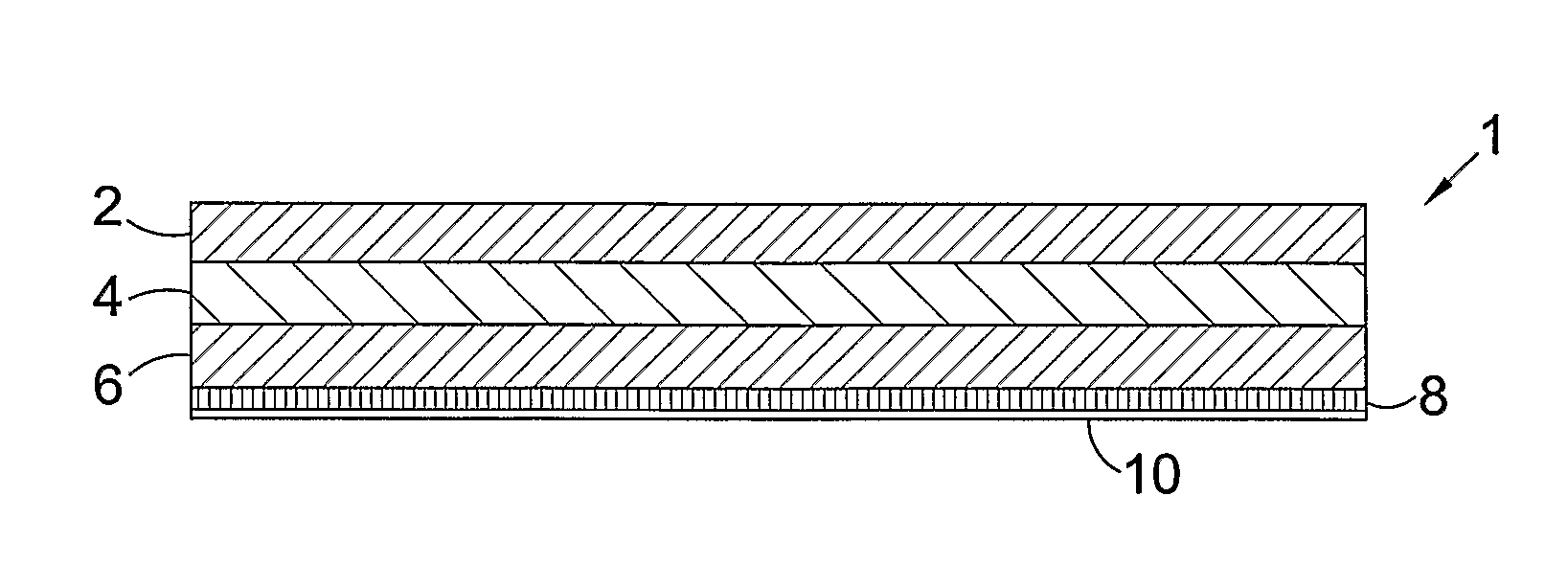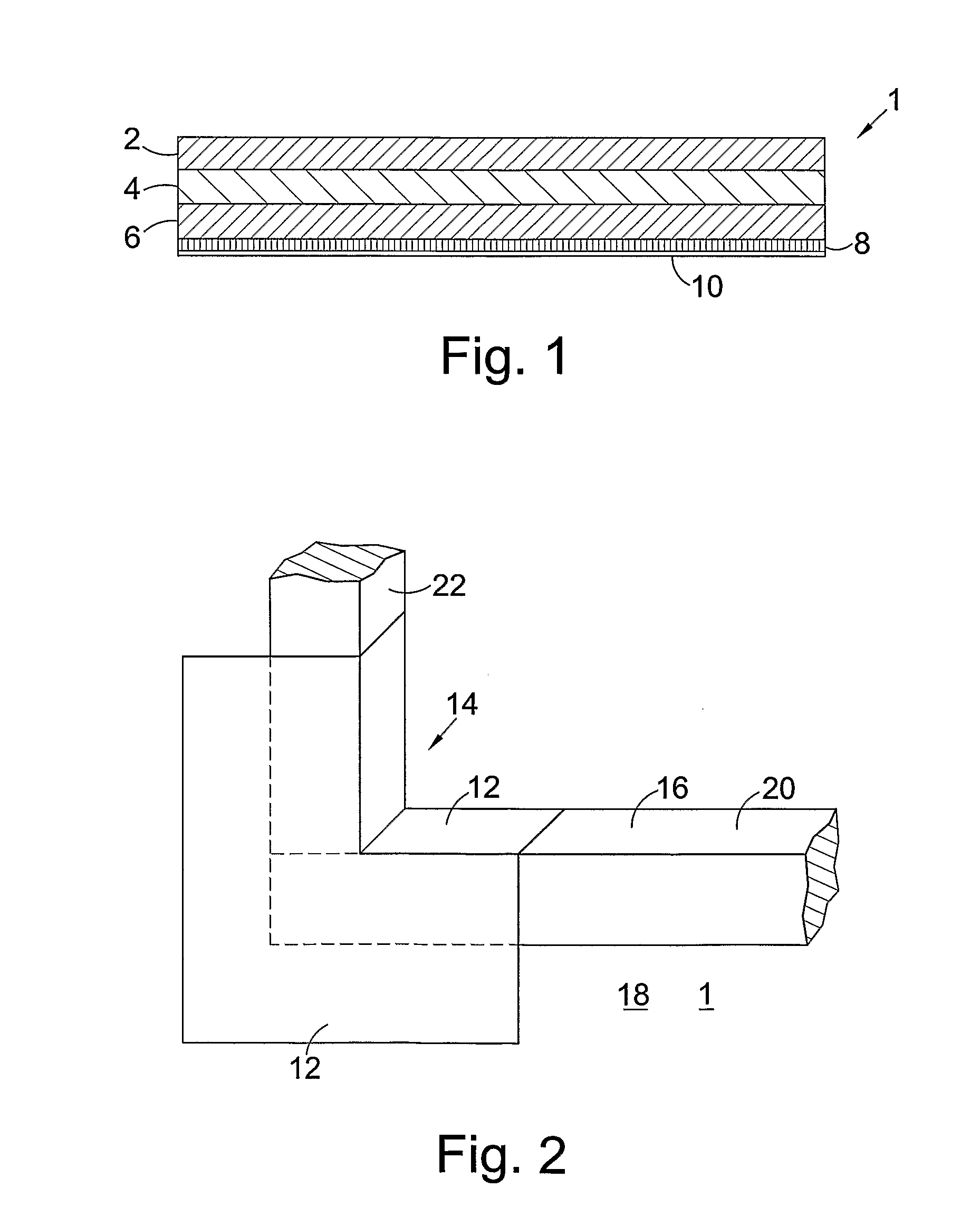Adhesive membrane
- Summary
- Abstract
- Description
- Claims
- Application Information
AI Technical Summary
Benefits of technology
Problems solved by technology
Method used
Image
Examples
example 1
The adhesive was prepared as a mixture of the following components, 1 to 4, (Available from VIGteQnos Co Ltd of Japan) in the ratio 100:40:2:3 by weight.
1. AR-2412 Two component cross linked acrylic pressure sensitive adhesive.Acrylic ester copolymer (39%)Hydrogenerated rhodine ester resin (10%)Acetic ether (ethyl acetate) (50%)Vinyl acetate (1%)
2. AR-739M.
Water-absorbent resin (1%)Polypropylene glycol (1%)Water (98%)
3. HD-739D
Modified polyisocyanate (20-25%)Silicon dioxide (5-10%)Toluene (50-55%)Acetic ether (ethyl acetate)(15-20%)
4. Tackifier (A xylene resin which improves the initial and extended tackiness of the adhesive film).
This mixture was applied to a release paper, dried and then adhered to the one side of the membranes.
The thickness of the permeable layer was 90 microns.
The results are shown in Table 1 below which shows that with the adhesive layer applied both membrane products retained more than 70% of their permeability.
TABLE 1DRY CUP TESTSRoofShield ®WrapShield ®NoWit...
example 2
An alternative adhesive composition comprises the same mixture of components as the mixture described above in Example 1 except that component 4, the tackifier (xylene resin) is replaced with polyoxypropylene glycol. The alternative example composition therefore comprises the following components, 1 to 4, (Available from VIGteQnos Co Ltd of Japan) in the ratio 100:15:2.5:2 by weight:
1. AR-2412 Two component cross linked acrylic pressure sensitive adhesive.Acrylic ester copolymer (39%)Hydrogenerated rhodine ester resin (10%)Acetic ether (ethyl acetate) (50%)Vinyl acetate (1%)
PUM
| Property | Measurement | Unit |
|---|---|---|
| Fraction | aaaaa | aaaaa |
| Fraction | aaaaa | aaaaa |
| Fraction | aaaaa | aaaaa |
Abstract
Description
Claims
Application Information
 Login to View More
Login to View More - R&D
- Intellectual Property
- Life Sciences
- Materials
- Tech Scout
- Unparalleled Data Quality
- Higher Quality Content
- 60% Fewer Hallucinations
Browse by: Latest US Patents, China's latest patents, Technical Efficacy Thesaurus, Application Domain, Technology Topic, Popular Technical Reports.
© 2025 PatSnap. All rights reserved.Legal|Privacy policy|Modern Slavery Act Transparency Statement|Sitemap|About US| Contact US: help@patsnap.com


